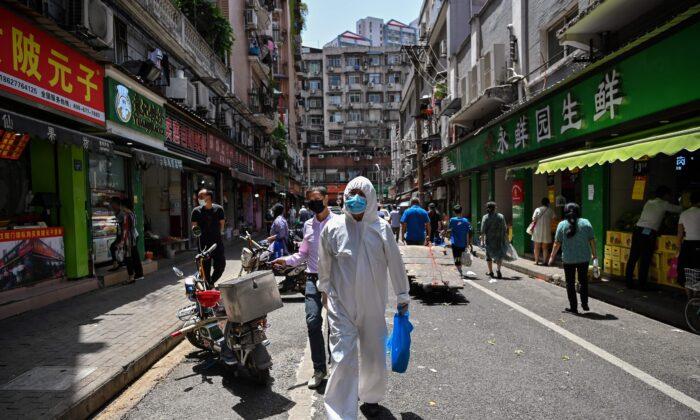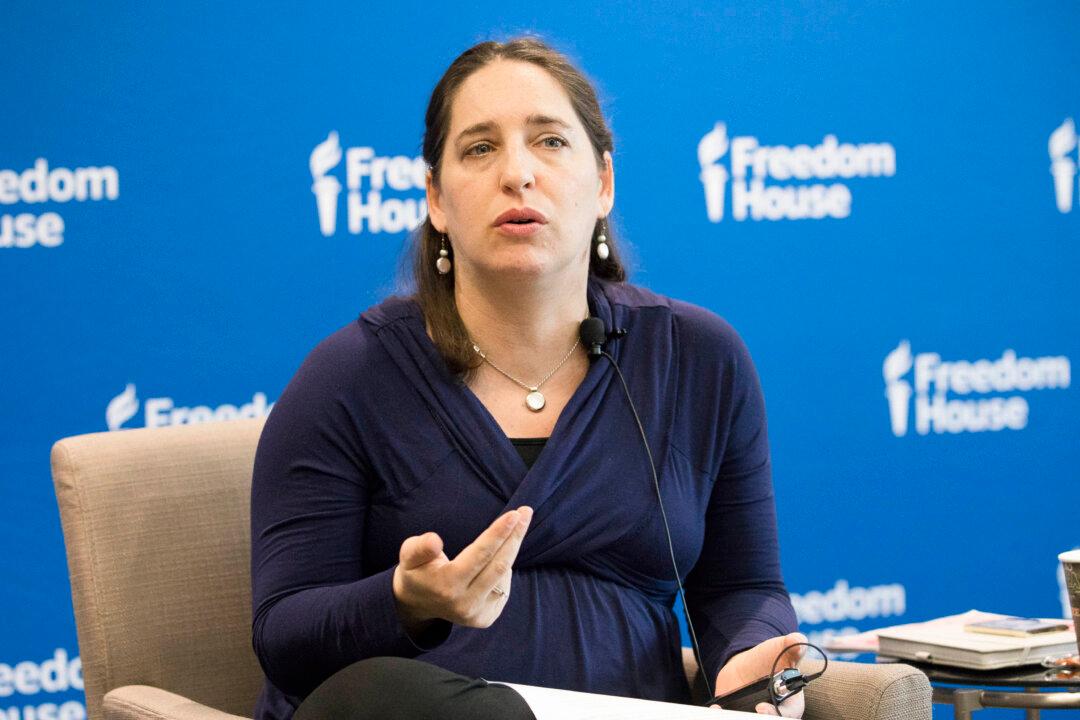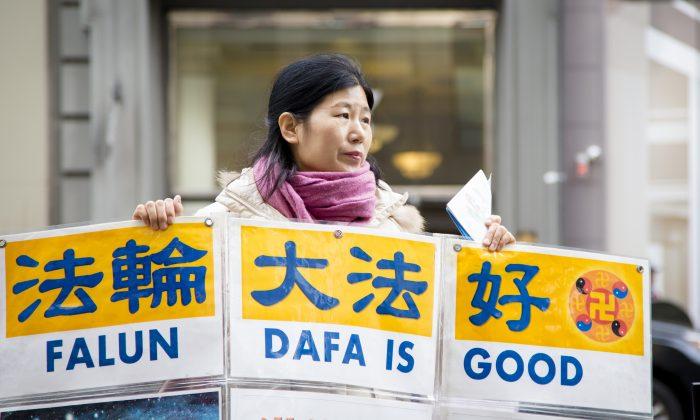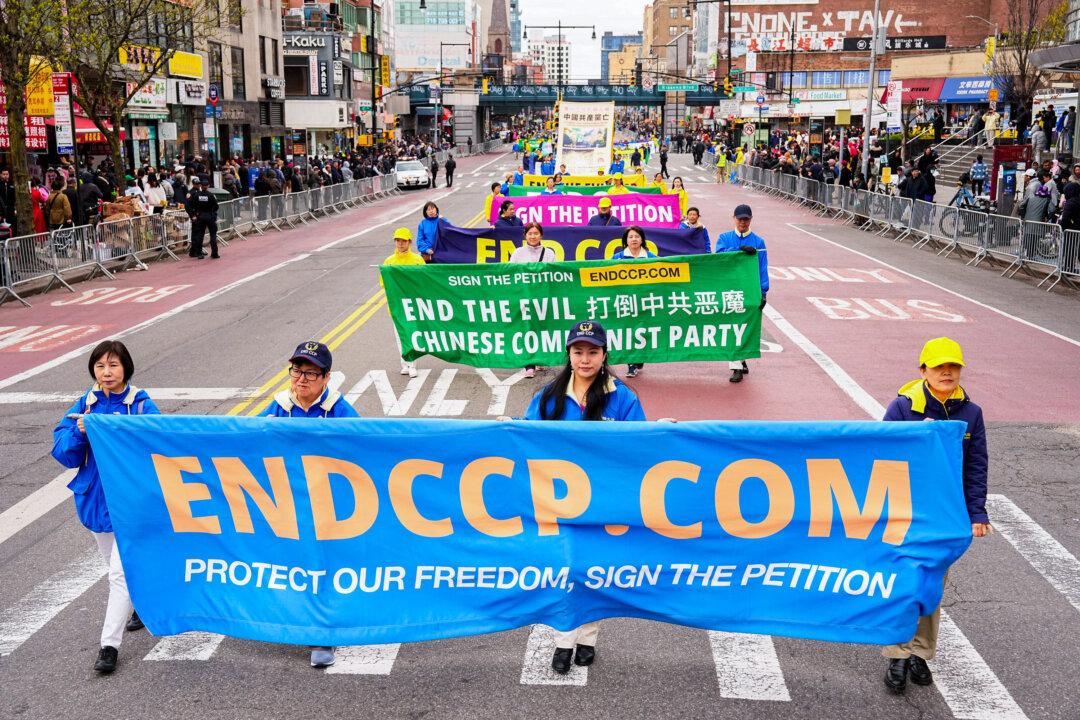The city of 703,000 in Jilin Province, which borders Russia, is the location of the latest outbreak, and one of only two places in China currently designated as “high-risk” for an outbreak. On May 17, the Fengman district in the province’s Jilin city had been labeled as a “high-risk” area.
Under a lockdown similar to that of Wuhan, where the virus first emerged, only one member of each household is allowed to leave his or her apartment building, only every other day for grocery shopping, according to a May 18 notice from the city government. Each time, the person can only spend a maximum of two hours outside.
In residential compounds with reported confirmed or suspected cases, no one is allowed to leave their apartments. All supplies are delivered by local stores, provided that residents supply a grocery list a day ahead.
Similar measures have also gone into effect in the Fengman district. Officials on May 17 called for a “blanket search” to identify all those who might be exposed to the virus, while all dine-in services and entertainment venues have been closed. Schools in the district, which recently reopened, will be suspended even for ninth-graders, who have their annual high school entrance examination just a month away (high school starts in 10th grade in China).
Shulan has “made a name for itself because of the outbreak,” local resident Wen (an alias) told The Epoch Times. “It’s become the second Wuhan.”
“Take a stroll on the street, you never know if you will bump into someone who has the virus,” a woman surnamed Yang, who owns a small business in Jilin city, southwest of Shulan, said in an interview. She has been burning through her savings to survive.
About 500 medical experts from across China have been dispatched to Jilin city to direct outbreak control efforts, according to the city’s health committee director, Liu Zhiqi. He said Jilin has collected 40,101 test samples over a three-day period. The city has also mobilized more than 3,400 volunteers to stand by 24/7 in its 95 local neighborhoods.
Zhong Nanshan, a Chinese respiratory expert who rose to prominence during the pandemic, has warned of a grim situation ahead.
“The majority of ... Chinese at the moment are still susceptible of the COVID-19 infection because [of] a lack of immunity,” Zhong said in a CNN interview on May 16. “We are facing [a] big challenge; it’s not better than the foreign countries I think at the moment.”
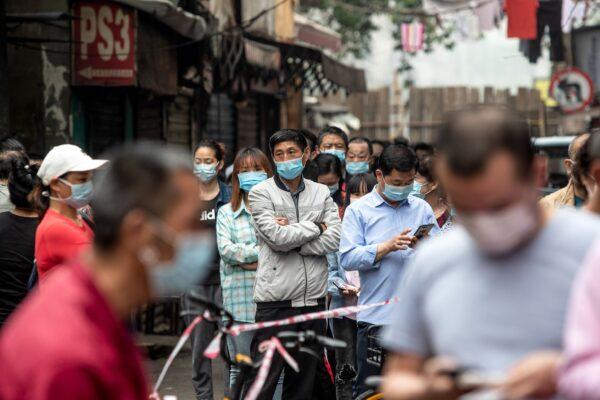
‘Chaotic’ Testing
Wuhan recently ordered diagnostic testing for all 11 million residents. The process, which often involves hours of waiting, has drawn sharp criticism among residents.“What do you think they are doing here?” a woman can be heard from the video. She added that she just completed the test.
“You can’t even tell which belongs to whom, so what’s the use in doing this?” she said.
One white-shirted woman also held up two bottles filled with swab samples to show the people around her.
“Chaotic,” Sun Tao, a local resident from Wuhan’s Qingshan district, told Radio Free Asia, adding that he has raised concerns at a separate testing site on Sunday.
Meanwhile, people living in the Rongke Tiancheng compound in Wuhan’s Jiang’an district also raised privacy concerns after residents were asked to be photographed holding their identification cards during testing.
On May 17, Jiang’an district officials said on Chinese social media platform Weibo that they have deleted the photos to “ensure residents’ information won’t be leaked and their interests won’t be harmed.”
A notice circulating on the internet showed that photographs were also taken at least eight communities where testing took place.
